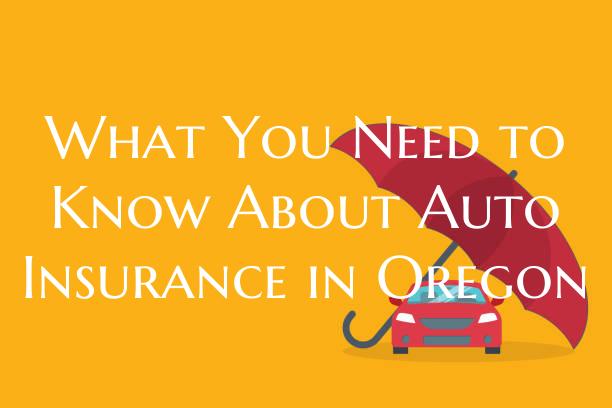Auto insurance is a vital necessity for drivers in Oregon, ensuring financial protection in case of unexpected accidents or mishaps on the road. Understanding the specifics of auto insurance in Oregon is essential to make informed decisions and comply with state laws. Here's what you need to know:
1. Minimum Liability Coverage: Oregon law mandates that drivers carry a minimum level of liability insurance. This includes $25,000 for bodily injury to one individual, $50,000 for bodily injury per accident, and $20,000 for property damage. This coverage helps pay for damages and medical expenses for others involved in an accident that you are responsible for.
2. Personal Injury Protection (PIP): Oregon is a no-fault state, which means that PIP coverage is also required. This coverage helps pay for your medical expenses resulting from an accident, regardless of who is at fault. The minimum PIP coverage in Oregon is $15,000.
3. Uninsured and Underinsured Motorist Coverage: While not mandatory, it is highly recommended to have uninsured and underinsured motorist coverage. This protects you in case you are involved in an accident with a driver who doesn’t have insurance or enough insurance to cover your damages.
4. Optional Coverages: In addition to the mandatory coverages, drivers in Oregon can opt for additional coverages such as collision coverage, comprehensive coverage, rental reimbursement, and roadside assistance. These optional coverages provide added protection and peace of mind.
5. Factors Affecting Premiums: Various factors influence auto insurance premiums in Oregon, including driving record, age, gender, make and model of the vehicle, and the coverage options selected. Additionally, factors such as your location and mileage driven can also impact your insurance rates.
6. Discounts and Savings: Insurance providers in Oregon offer various discounts that can help reduce your insurance premiums. These may include discounts for safe driving, bundling policies, taking driver education courses, and having anti-theft devices installed in your vehicle.
7. Comparison Shopping: It’s wise to compare quotes from multiple insurance providers to find the best coverage at the most competitive rates. Shopping around can help you save money while ensuring you have adequate coverage.
8. Maintaining Insurance: It’s crucial to maintain continuous auto insurance coverage in Oregon. Failing to do so can result in fines, license suspension, and other penalties.
By familiarizing yourself with these key aspects of auto insurance in Oregon, you can make informed decisions when purchasing and maintaining your policy. Stay protected on the road by understanding your insurance needs and obligations in the Beaver State.

